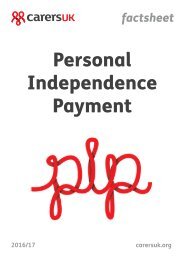data-protection-and-journalism-a-guide-for-the-media-draft
data-protection-and-journalism-a-guide-for-the-media-draft
data-protection-and-journalism-a-guide-for-the-media-draft
Create successful ePaper yourself
Turn your PDF publications into a flip-book with our unique Google optimized e-Paper software.
Data <strong>protection</strong> <strong>and</strong> <strong>journalism</strong><br />
Privacy <strong>and</strong> freedom of expression<br />
In <strong>data</strong> <strong>protection</strong> law<br />
Data <strong>protection</strong> law grew from concerns about protecting <strong>the</strong> individual’s<br />
right to privacy. But it was also about ensuring economic <strong>and</strong> social<br />
progress. Its aim is not to ensure privacy at all costs, but to strike a fair<br />
balance between individual privacy <strong>and</strong> <strong>the</strong> wider interests of society.<br />
The balance with freedom of expression in particular is explicitly<br />
recognised in Article 9 of European Directive 95/46/EC (<strong>the</strong> <strong>data</strong><br />
<strong>protection</strong> directive on which <strong>the</strong> DPA is based):<br />
“Member states shall provide <strong>for</strong> exemptions… <strong>for</strong> <strong>the</strong><br />
processing of personal <strong>data</strong> carried out solely <strong>for</strong> journalistic<br />
purposes or <strong>the</strong> purpose of artistic or literary expression only if<br />
<strong>the</strong>y are necessary to reconcile <strong>the</strong> right to privacy with <strong>the</strong><br />
rules governing freedom of expression.”<br />
This is <strong>the</strong> basis <strong>for</strong> <strong>the</strong> exemption <strong>for</strong> <strong>journalism</strong>, art <strong>and</strong> literature in<br />
section 32 of <strong>the</strong> DPA, which is specifically designed to protect freedom of<br />
expression. In accordance with <strong>the</strong> directive, it does not give an<br />
automatic blanket exemption in every case. It is only intended to apply<br />
where necessary to strike a fair balance – but it is still one of <strong>the</strong> broadest<br />
exemptions available. See chapter 4 below <strong>for</strong> more detail on how <strong>the</strong><br />
exemption works.<br />
The DPA also restricts <strong>the</strong> powers of <strong>the</strong> ICO in regulating <strong>the</strong> <strong>media</strong>, <strong>and</strong><br />
ensures additional safeguards <strong>and</strong> points of appeal. And <strong>the</strong> ICO will<br />
always consider <strong>the</strong> importance of freedom of expression – <strong>and</strong><br />
specifically, a free <strong>and</strong> independent <strong>media</strong> – when deciding how best to<br />
use its powers in <strong>the</strong> public interest, in line with its obligations under <strong>the</strong><br />
HRA. See chapter 6 below <strong>for</strong> more in<strong>for</strong>mation on <strong>the</strong> role of <strong>the</strong> ICO in<br />
cases involving <strong>the</strong> <strong>media</strong>.<br />
In industry codes of practice<br />
We also recognise that this same balance between privacy <strong>and</strong> freedom of<br />
expression is already reflected in industry codes of practice. Each of those<br />
codes specifically incorporates a balancing act <strong>for</strong> invasions of privacy:<br />
DRAFT 9




